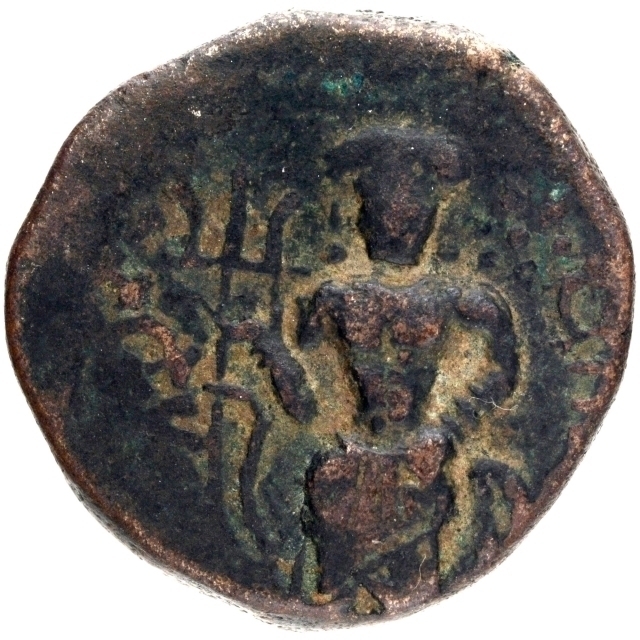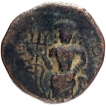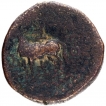This Lot is closed.
- P-Auction # 32
- Bids: 6
- Views:1553
| Start Price 30000 | Estimated Price 30000-40000 |
| login, to view Hammer value | |
| Quick Description | ||||
|---|---|---|---|---|
| Denomination | Tetra Drachma | Metal | Copper | |
| Full Description: Kuninda Dynasty (200 BC), Copper Tetradrachma, Chitresvara type, Obv: the god Shiva standing facing front, wearing a turban on his head, holding an axe-shafted trident in his right hand, his left hand akimbo with a leopard skin hanging from it, a lotus behind his left shoulder and Brahmi legend “Bhagava(tah Chitresvara-Maha)tmana” around the field, Rev: a deer standing facing left with visibly stretched horns and a vase with a Srivatsa symbol above its back on the right, a six-arched hill in front with a lotus under it, the tree behind the deer has four horizontal branches, an Indradhvaja symbol below the deer, 17.50g, 25.20mm, (Handa # Pl. LXXX- 3-4), about very fine, Exceedingly Rare. Note: Shiva Chitreshwara coins are amongst the most enigmatic types of the tribal coinage of ancient India. First known in 1834 from Saharanpur in UP, this is a highly localized series of coins, known mostly from Garhwal-Kumaon and its adjoining regions. Interestingly, Shiva, in form of a swayambhu linga, is still worshipped as Chitresvara by the people of Gopeshwar, near Almora in Uttarakhand. As per Hindu mythology, Chitreshwar (Shiva) is the father of Kartikeya (Brahmanyadeva), a well-known figure from Yaudheya coinage. The legend on these coins i.e. 'Bhagavato Chitresvara Mahatmanah' means (the coin of) 'the almighty Chitreshwar'. There is absolutely no doubt that the word stands for Shiva, who is seen depicted on the coin. The British Museum’s collection of 11 such coins were acquired from H. Nelson Wright, C. J. Rodgers, Alexander Cunningham and Spink. These coins are generally struck on Pre-Kushana coinage and seem to have been issued on two weight standards: 160 and 80 Rattis, of 18.5 and 9.25 gms respectively. Since being found, the attribution of these coins have been debated. Some scholars are inclined to link these coins with Kunindas whereas others are of the opinion of them being Yaudheya issues. This debate is far from settled but with respect to similarities with Shadanan Brahmanyadeva type of Yaudheya coins and the Amoghabhuti coins, the Chitreshwar coins bear more resemblance to the former. Coins of the Chitreshvara type are quite rare and only a few pieces are known. | ||||


